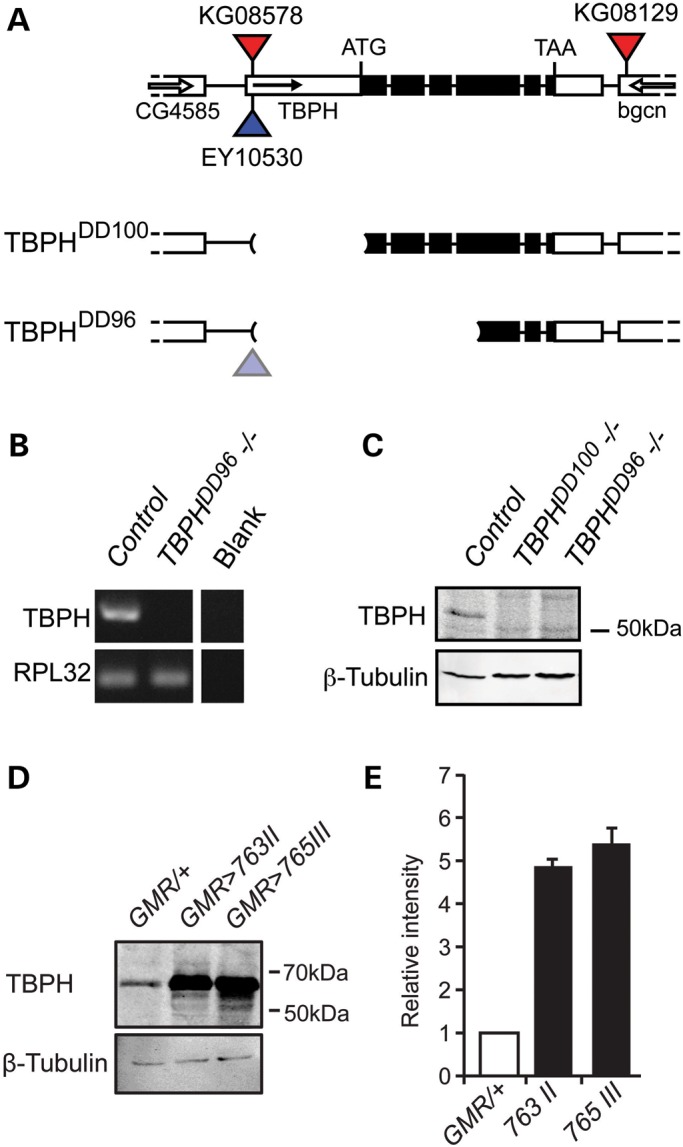Figure 2.

Loss- and gain-of-function alleles of the Drosophila TDP-43 homolog TBPH. (A–C) TBPH null mutant alleles and (D, E) UAS-TBPH overexpression alleles. (A) TBPH null mutant alleles (TBPHDD100 and TBPHDD96) were generated by imprecise P-element excision. Two types of deletion mutant were generated lacking distinct sections of the TBPH genomic region. The TBPHDD100 allele is lacking the promoter region of TBPH, including the start codon. The TBPHDD96 allele is lacking a larger amount of gDNA including the promoter region, the start codon and bases encoding the RNA recognition motifs (RRMs). (B) RT–PCR revealed lack of TBPH mRNA in homozygous TBPH mutants. Ribosomal protein L32 (RPL32) was used as loading control. Control genotype: w1118. (C) TBPHDD100 and TBPHDD96 mutant alleles are protein null, as revealed by the absence of the TBPH-specific 58 kDa protein band present in w1118 flies (control); shown is a western blot using protein extracts from six fly heads blotted with anti-TBPH antibody. (D) Western blot analysis of GMR-Gal4 driven UAS-TBPH shows excess TBPH protein expression in adult heads. Two different UAS-TBPH lines with insertion on different chromosomes (#763 on II, #765 on III) show comparable expression levels. (E) Quantification of GMR>TBPH shows a dramatic increase in TBPH protein levels. Western blot TBPH signal intensities were normalized against β-Tubulin. Mean and SEM are shown.
